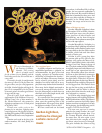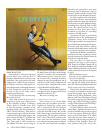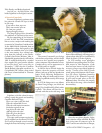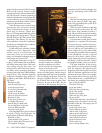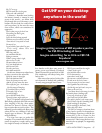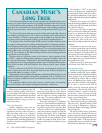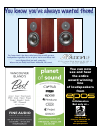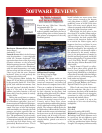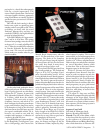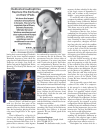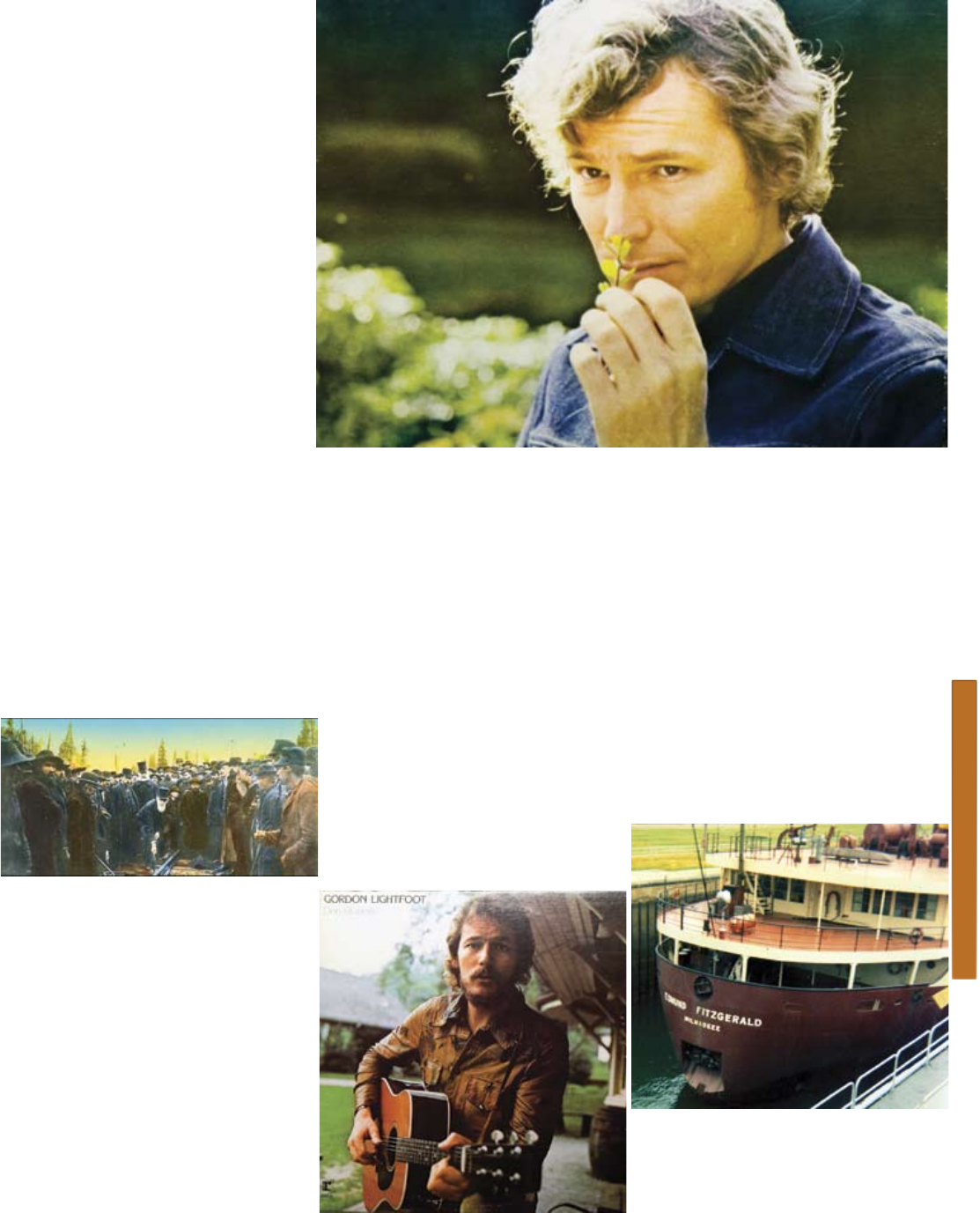
Feedback
Software
Elvis Presley and Barbra Streisand.
And oh yes…by Bob Dylan, who
holds Lightfoot in the highest esteem.
A historical interlude
For some Lightfoot is a painter, using
his guitar for a brush. He says as much
in one song:
If you want to know my secret
Don’t come runnin’ after me
For I am just a painter
Passing through in history
The song On Yonge Street, chronicles
the ambience of Toronto’s main street.
He has something of the historian
as well. In 1967 the CBC commissions
him to write a major work marking the
centennial of Canadian Confederation.
In the 1860’s British Columbia, then an
independent colony, had agreed to join
Canada on condition that it be linked
to the new country by a railroad run-
ning from the Atlantic to the Pacific.
Canada’s first Prime Minister, John A.
Macdonald, promised such a railroad for
1881. It would be delayed by a scandal
that toppled his government (shades
of our own day!), and it was only on
November 7, 1885 that the Canadian
Pacific Railway’s last spike was driven, in
Craigellachie, BC, before a large crowd
(the event is immortalized in a famous
picture).
Lightfoot, with his talent for story-
telling, creates the poetic and touching
Canadian Railroad Trilogy.
There was a time in this fair land
When the railroad did not run
When the wild majestic mountains
Stood alone against the sun
Long before the white man
And long before the wheel
When the green dark forest
Was too silent to be real
This epic work becomes a major hit,
and is included on the album The Way I
Feel. It will go through several versions,
though the most interesting is certainly
his own, with the orchestra of Ron
Collier.
That same Centennial year brings
with it a buzz of activities, and it is fertile
in success for Canada’s most popular
writer-composer. He undertakes a cross-
Canada tour as well as appearances in
New York and Los Angeles.
In 1969 he leaves United Artists for
Reprise, then the property of Frank
Sinatra, and sets up his own production
house, Early Morning Productions.
With the help of friends and his sister
Beverly, he publishes nearly all his songs
himself.
In 1970 he brings out a new album,
Sit Down Young Stranger, on which one
song, If You Could Read My Mind, makes
a splash. The album will later be re-
released with that as the title song. And
in 2002 the Festival of Charlottetown, on
Prince Edward Island, will inaugurate a
cabaret show titled If You Could Read My
Mind: the Music of Gordon Lightfoot.
In 1976 another event spotlights
Lightfoot’s storytelling talent. In Cana-
dian waters in Lake Superior, a lake
that has been known to take itself for
an ocean, a large cargo ship is broken in
two by 7.5 metre waves and 125 km/h
winds, going to the bottom with 29 men.
In a few verses, Lightfoot chronicles
The Wreck of the Edmund Fitzgerald.
It will reach second place on the US
Billboard chart. For many, the tragedy
of the ship is the song, a sort of musical
documentary.
Over the next three decades, Light-
foot’s calendar will be well filled. By 1980
he is giving some 50 concerts a year. In
1981 a concert tour takes him to Europe,
ULTRA HIGH FIDELITY Magazine 65









